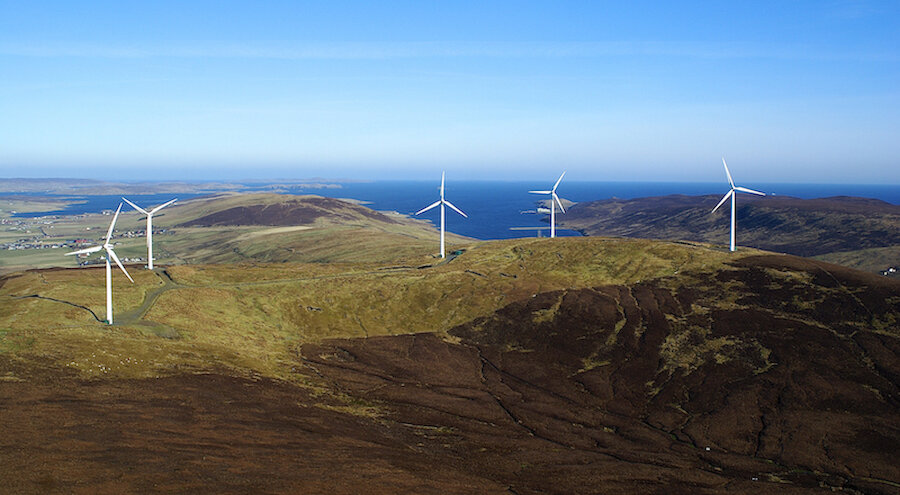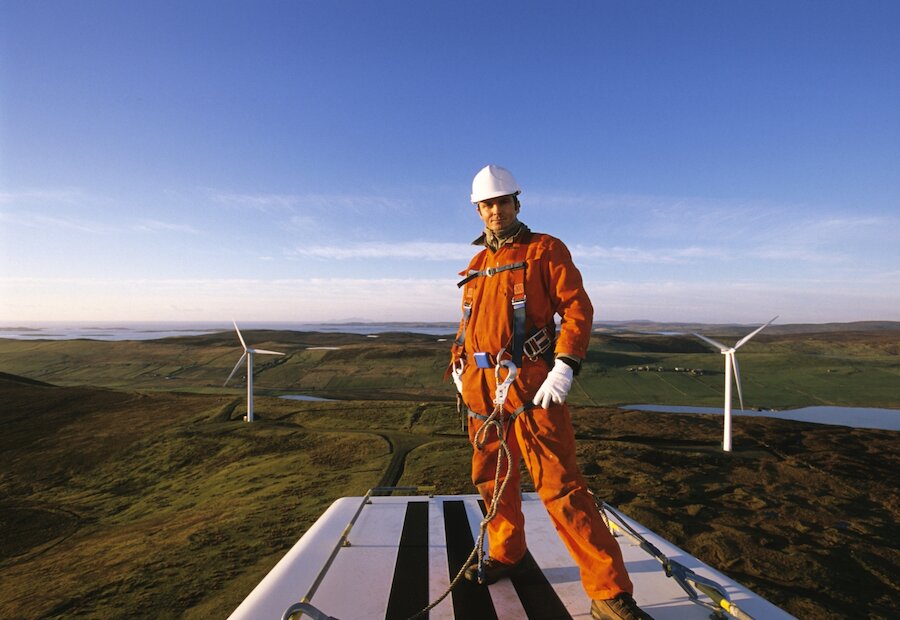Ambitious new plans for a renewable energy hub in Shetland could eventually mean £5bn revenue and 1,750 new jobs, placing the islands at the vanguard of a greener energy future for the UK.
The Shetland wind is a curious thing. This intangible yet powerful flow of gases creates wild seas and epic winter storms, and turns the sky into an ever-shifting canvas of colour and shape. It keeps the midges away, but also means there are precious few trees across its starkly beautiful interior. It could also be vital to the future of Shetland energy.
This week, the Shetland Islands Council announced a plan to work with the Aberdeen-based Oil and Gas Technology Centre (OGTC) to develop Shetland as a new national clean energy hub. Based around wind and tidal energy, and zero-emission hydrogen fuel, the plan means a gradual reduction of emissions from Shetland’s existing oil and gas production. The aim is for the West of Shetland oil and gas assets to be net zero by 2030. By 2050, the islands hope to provide five per cent of the UK’s clean energy needs, generating £5bn of revenue for the region and creating 1,750 new local jobs in the process.
There are a lot of reasons that Shetland makes sense as a centre of renewable energy. An obvious one is that Shetland has the most consistent wind in Europe. Hence, ideal conditions for projects such as the proposed 103-turbine Viking Energy Wind Farm in Shetland’s central Mainland, which could become one of the most productive onshore wind farms in the world. The proposal also includes a high-voltage transmission cable joining Shetland to the Mainland UK electrical grid. Still waiting for approval by government regulator Ofgem, the projects are said to be ‘shovel-ready’, with the idea that both could be up and running by 2024. An area of the North Sea east of Shetland is also being considered as a potential site for offshore wind turbines.
The islands also have consistently fierce tides, which is why Edinburgh-based Nova Innovation decided to install the world’s first offshore tidal array in the Bluemull Sound between Yell and Unst. Having installed the first of its three turbines in 2016 (three more are planned), Nova Innovation have worked with Tesla battery storage to effectively create the world’s first tidal power station.
Energy has been a hugely important part of the Shetland economy
But perhaps the key factor behind the hub is that Shetland is already an important energy centre. The Sullom Voe terminal has been processing North Sea oil and gas for more than 40 years, so much of the infrastructure and know-how for a transition to cleaner energy is in place. Shetland will continue to be a centre of oil and gas, but with platforms increasingly powered by clean energy. Central to the new approach will be testing and piloting ways to produce industrial amounts of clean blue and green hydrogen, and new ways to remove and store carbon, often by repurposing existing infrastructure. The plan is to reduce carbon emissions by eight million tonnes a year by 2045.
There are also pressing reasons for Shetland to shift away from its existing energy model. With North Sea oil production declining, and the global market in challenging times, Shetland also faces the fact that its two power stations at Lerwick and Sullom Voe will need to close within the next five years due to the age of the facilities and new emissions standards. The Viking Energy plans for a wind farm and transmission cable will help to ensure Shetland’s own energy supply, while also creating the possibility of exporting energy directly to the UK.
‘Energy has been a hugely important part of the Shetland economy,’ says Douglas Irvine, the Project Lead for the Energy Hub at the Shetland Islands Council. ‘We are trying to make sure that it continues to be a dynamic and important part of the islands well into the future. That’s crucial not just to Shetland, in terms of supporting our economy, but it’s also going to be important to national and international plans to shift to greener energy.’
This could be an exciting new dawn for Shetland’s energy industry, with positive impacts far beyond the islands themselves. And rather than cursing the Shetland wind, Shetlanders might end up being grateful for it.


